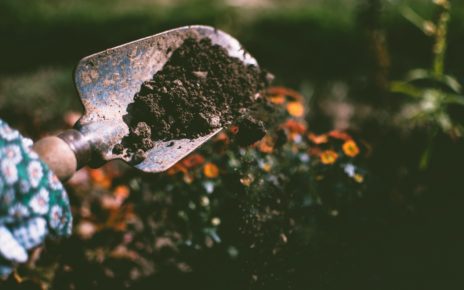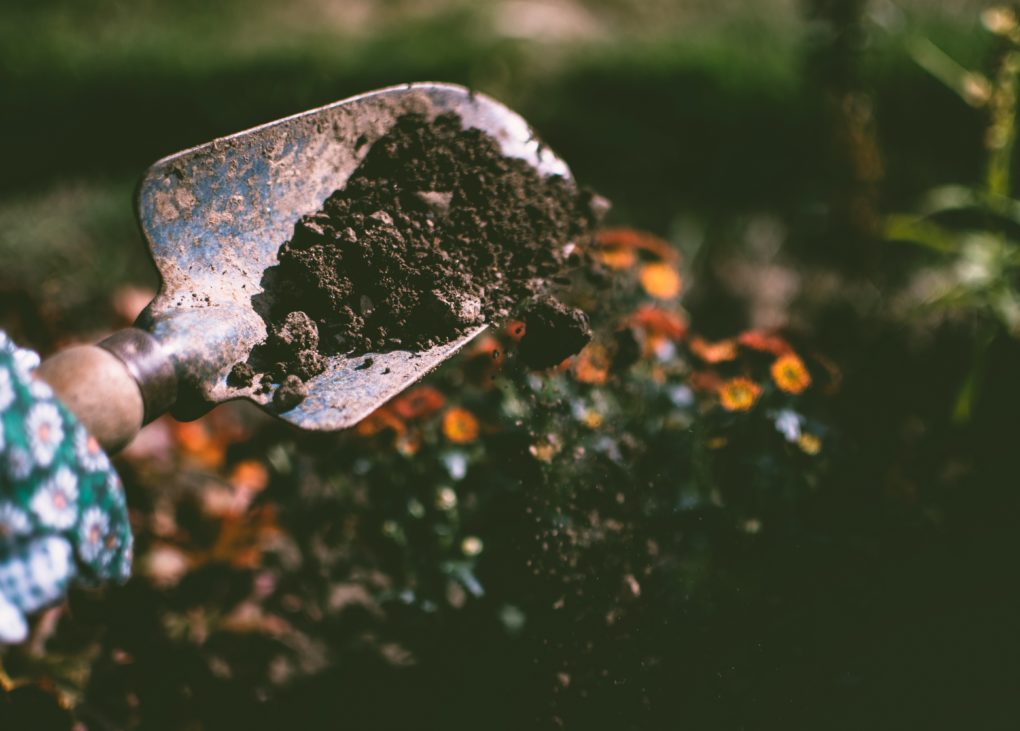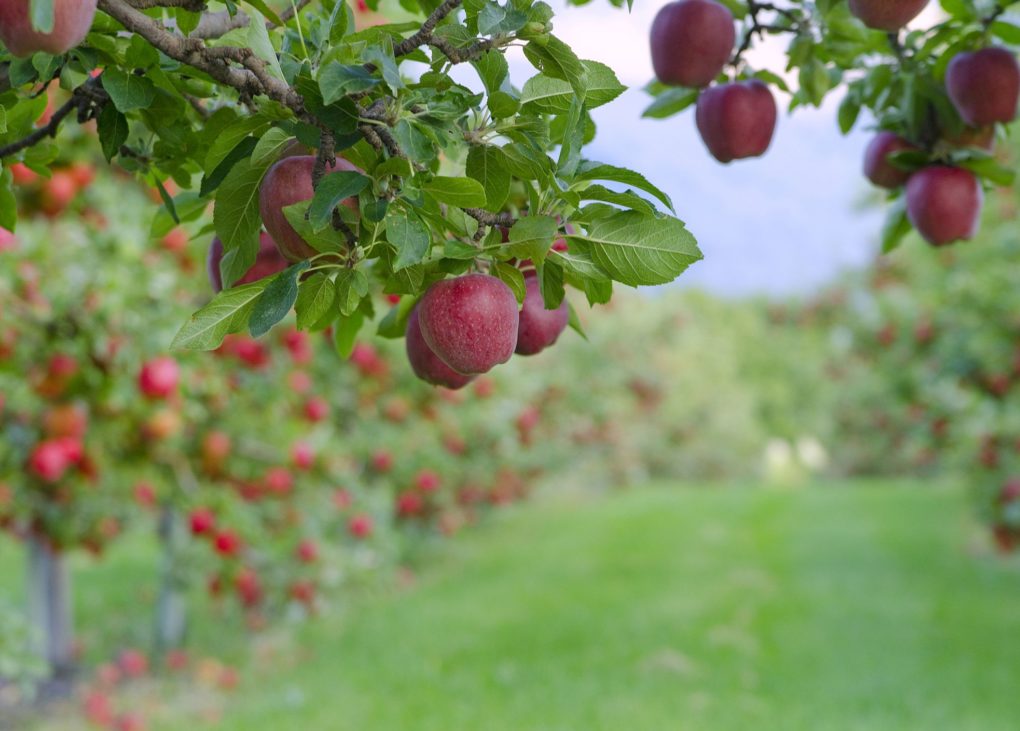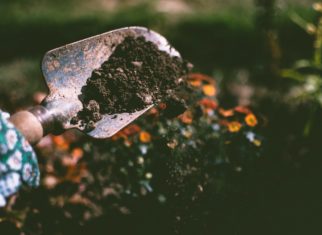
Blue Collar Guides

Plumbing Tools Explained Simply
Whether you’re a beginner plumber or a seasoned veteran, having the right tools will help you get your jobs done quickly and efficiently. Here are 10 essential plumbing tools every homeowner and plumber should have.
Channel-type pliers (sometimes called slip-joint pliers) have a long handle and self-adjusting jaws that can grip pipes and other hardware of almost any size. They are also useful for removing and tightening faucets and valve lock nuts.
Hex Keys
A hex key set is one of the most important tools that any plumber can have. Also known as Allen wrenches, hex keys have a short handle with a hexagonal socket that matches the shape of hex bolts and screws to provide easy loosening and tightening. Hex keys come in a variety of sizes to fit a range of screw and bolt sizes, making them an essential tool for a wide range of plumbing projects.
Regardless of the specific type of hex key you choose, there are some basic rules that should be followed when working with these handy tools. For example, ensuring that the key is fully inserted into the screw or bolt before applying any force minimizes the risk of slippage and subsequent rounding of the fastener. Additionally, using caution when applying pressure and avoiding the use of extenders or cheaters to increase leverage can help avoid damage to the fastener or the wrench itself.
If you’re looking to purchase a hex key set, make sure to select one made from robust materials like chrome-vanadium or alloy steel. These types of materials safeguard the tools against premature wear and enhance their overall performance and reliability.
In addition to these tips, it’s essential to always be aware of how much torque you are applying when using hex keys. Applying too much force can break the tool or damage the screw or bolt, so it’s important to only apply a steady, controlled amount of pressure. In addition, if the hex key begins to show signs of wearing or the edges become rounded, it’s time to replace it to avoid damaging the fastener. These simple rules can help you to get the most out of your hex key set and keep it in good condition for years to come.
Specialty Tools
The plumbing industry requires a wide array of tools to do the job correctly and efficiently. From removing old or broken nipple extractors to cutting through hard pipe, plumbers need a variety of speciality tools to get the job done.
A nipple extractor is a tool used to remove the old nipples from a pipe fitting without damaging the connectors. This tool is typically made from corrosion-resistant galvanized steel and has a simple design that makes it easy to use.
Other specialty tools that plumbers often use include a drain snake, hand augers, and a borescope (inspection camera). A drain snake is a long, flexible metal wire with a corkscrew tip that can break up and remove clogs in sinks or tubs. A hand auger is a similar tool designed to break up and clear heavy-duty blockages in sewer lines, while a borescope is a much larger motorized version that can see into tight or inaccessible spaces.
Another indispensable specialty tool for plumbers is a pipe cutter. These specialized tools have a sharp cutting wheel on a rotating head that can cut through pipes, tubing, and other metals by digging into the material with increasing pressure. This enables plumbers to cut through tough materials with ease.
Finally, a plumber’s torch is a handheld device used to apply heat to specific areas of piping. This allows plumbers to seal off leaks and connect new piping with a strong and watertight connection. A plumber’s tape, or thread sealing tape, is also an essential plumbing tool that every plumber should have on hand for patching up or securing connections. This specialized tape is available in various widths to accommodate different types of piping threads – and certainly popular amongst Des Moines plumbers.
Adjustable Wrench

Referred to as spanners in the UK, adjustable wrenches are essential tools for any plumber or DIYer. Similar to a crescent wrench, the adjustable spanner features one fixed jaw and one moveable jaw that can be adjusted in size according to the nut or bolt you’re trying to grip. While monkey wrenches and pliers can also grip fasteners, an adjustable spanner is more versatile because it lets you change the size of the jaws while still gripping the nut or bolt.
Adjustable wrenches work best when you’re using them correctly. If you apply too much force, the movable jaw will pivot and become loose. This can damage the bolt head or cause the wrench to slip and lose its grip. To avoid this, you need to be sure that the jaws are positioned at a specified distance from each other and that the handle is being moved up or down.
The movable jaw of an adjustable wrench is usually farther from the handle than the fixed jaw. This allows the tool to clamp on a flat surface without damaging the bolt heads, unlike pipe wrenches, which have serrated jaws that can scratch or mar bolt heads.
While many professionals use adjustable wrenches on a regular basis, they should take special care to follow safety guidelines when handling them. Steel hand tools can create high energy sparks, which poses a serious risk of fire in environments that contain flammable gases, liquids and solids. This is why the Department of Industrial and Systems Engineering at North Carolina State University recommends only using adjustable wrenches made with non-sparking materials. This can help prevent injuries and reduce the risk of accidents in hazardous environments.
Drain Snake
For those stubborn drain clogs that a plunger can’t handle, it might be time to break out plumbing’s secret weapon: the drain snake. Also known as a “top snake” or a drum snake, this tool’s coiled metal cable is typically 25 feet long and features a corkscrew-like tip that snags and removes debris. It’s usually powered by a crank or an electric motor and can be used to unclog showers, toilets, bathtubs, washing machines and sinks.
To use a plumbing snake, first locate the clean out serving your home’s main line or the toilet vent stack inlet and connect your snake to that pipe. Then, carefully feed the end of your snake into the clogged drain opening. Once the clog is snagged, rotate the snake around the pipe, moving it up and down as well as side to side. Once the clog is broken up and dislodged, pull the snake out of the drain.
If you’re unable to clear your drain clog, it might be necessary to call in a professional plumber. Luckily, these tools are relatively inexpensive, so doing so can help save you both time and money down the road.
Before using a drain snake, it’s important to make sure you have rubber gloves and a bucket on hand to catch any debris that the clog may dislodge or break up. You’ll also want to remove your home’s P-Trap, if it’s still in place. Once the clog is cleared, you’ll need to replace the trap arm and any stoppers or covers. You should then run water through your drain to ensure that it’s completely clear and fully functioning. Also, remember to wash and store your snake properly after every use to avoid clogs down the road.

How to Properly Clean and Maintain Your Cutting Board
Wood cutting boards must be cleaned and sanitized after every use to avoid cross-contamination and harboring harmful pathogens. In this article, you’ll discover innovative ways to clean, deodorize and maintain your wooden cutting board to keep it looking and functioning its best.
After cleaning, dry your board thoroughly (damp boards become breeding grounds for mold). If you’re using a board cream, rub it in with a clean, lint-free rag until the board is evenly coated.
Scrub it
Whether you have plastic or wooden cutting boards, it’s crucial to scrub the surfaces after every use. This helps get rid of the germs and dirt that can cause dangerous cross-contamination, as well as the stains, odors and knife nicks that can make your cutting board unattractive.
You can clean your board with a kitchen scourer and hot or warm water with dishwashing detergent or antibacterial soap, but it’s important to scrub both sides of the surface – and especially the corners – where food often collects. After scrubbing, rinse the board with a large amount of hot water to dislodge any food particles that might be stuck. You should also sanitize your cutting board once a week or so to ensure you’ve removed all the harmful bacteria from its surface. This involves soaking the board in a chlorine bleach solution or vinegar for a few minutes, but you should always follow the manufacturer’s instructions regarding dilution.
Stains and strong smells are inevitable, but you can minimize them with regular cleaning and upkeep. For set-in stains, you can sprinkle the board with coarse salt and rub it in with a half lemon cut side down; the acidity of the salt and the abrasion of the lemon will lift most stains. To remove smells from your cutting board, you can also scrub it with a paste made from baking soda and water. The neutral ph in the baking soda will absorb any odors, while the mild grit of the mixture helps scrub away any food particles.
It’s also important to properly rinse and dry your cutting board after each use. Leaving water sitting on the surface of your cutting board will cause bacteria to grow and create an unpleasant and hazardous film that can contaminate ready-to-eat foods you’ve chopped or cooked. Always make sure to use hot water, as this can kill more bacteria than cold or lukewarm water.
Finally, to keep your cutting board in tip-top shape, you should oil it once a month. While you may be tempted to slather on any old cooking oil, such as vegetable or coconut, it’s recommended that you use a white mineral oil instead, which will not go rancid.
Rinse it
Immediately after using your board, rinse it with running hot water. Wood fibers are sensitive to moisture, and soaking a wood cutting board in water can cause them to expand, leading to warping or cracking. By rinsing right after each use, you can keep your wood cutting board in good condition for years to come.
Rinse the board until you can no longer see any food debris or soap residue. Make sure you run the water all the way around the board, including any grooves and grips. Then dry your board thoroughly with a clean cloth or paper towel. Damp boards are breeding grounds for bacteria. If you don’t have a cloth, use absorbent paper towels or blotting papers to remove as much water as possible. When the board is completely dry, it’s ready to use again.
If your cutting board has stubborn stains or strong odors, you can deodorize it by applying a solution of distilled white vinegar and three percent hydrogen peroxide to the surface of the board. Alternatively, you can rub the board with kosher salt or baking soda, then rinse and dry it.
Some foods, like berries and red meat, tend to stain wooden boards. You can help prevent stains by regularly applying mineral oil to your board after each wash. Mineral oil is colorless and odorless, and it won’t turn rancid on your board the way that vegetable oils can do. Use a food-safe mineral oil, such as Howard Cutting Board Oil or Clapham’s Beeswax Salad Bowl Finish.
Aside from routine cleaning, a regular application of wood conditioner is the best way to protect your board from daily wear and tear and to avoid cracking and warping. After washing your board, apply a liberal coat of food-grade beeswax to the surface and edges, then allow it to soak in for several hours or overnight before wiping off any excess. Then buff the board with a clean cloth to give it a nice shine. For added protection, re-wax your board every month or so – for the un-initiated, you can Discover Little-Known Cutting Boards on Amazon, for great finds.
Deodorize it
If you’ve used a cutting board to cut raw meat, fish, or poultry, it’s important to clean and sanitize it immediately after using it. This will help prevent cross-contamination and protect you and your family from food-borne illnesses.
The best way to sanitize a wood cutting board is to use vinegar, as it’s both natural and effective. Simply apply the vinegar to the surface of the board and let it sit for a few minutes as it works to kill any germs. Once the board is sanitized, rinse it off with water and dry it thoroughly with a cloth or paper towel.
Vinegar is also an excellent deodorizer for a wooden cutting board. Simply keep a spray bottle filled with white vinegar and use it to regularly spritz down your cutting board. The citric acid in the vinegar will neutralize odors while working as a natural disinfectant. If you prefer, you can also use a lemon to eliminate odors on a wood cutting board by rubbing it on the surface.
Certain foods can stain a wood cutting board, which is not only unsightly but can harbor bacteria. For tough stains, try scrubbing the board with a damp sponge or cloth and coarse salt. You can also use 3 percent hydrogen peroxide to banish any unwanted bacteria from a wooden cutting board. Simply pour the solution over the surface of the board, let it sit for a few minutes as the fizzing action kills any germs, then rinse and dry the board.
Once you’ve cleaned and sanitized your cutting board, it’s a good idea to add a protective layer of oil to keep it in good condition. Be sure to use an organic oil that’s safe for food preparation, such as coconut oil, beeswax, or tung oil. Beware of other oils that have high levels of fat, as these will eventually go rancid and leave your board smelling bad. Adding an oil to your cutting board can also help protect it from warping and cracking over time. When choosing an oil, be sure to follow the directions on the label to ensure that you’re applying it properly.
Oil it

Wood cutting boards need to be oiled regularly to prevent the wood fibers from drying out and becoming brittle. This in turn can cause the board to warp or crack over time. Oil also helps the wood repel moisture and other liquids, keeping it from swelling and causing a warped or cracked surface.
To properly oil your board, make sure it is thoroughly cleaned and dry first. Start by hand-washing it using hot soapy water and make sure to wash both sides of the board as well as the edges, as this is where most people miss out when washing their boards. After cleaning it, let the wood completely dry before rubbing it down with a food safe oil (Wood Cutting Boards recommends a mixture of USP-grade mineral oil and beeswax or Good Housekeeping suggests using a simple vegetable oil).
Use a clean, lint-free rag to rub the oil into the surface of the board, working into all the crevices and corners. Once you have covered the entire surface of the board, leave it to absorb overnight.
If you have a hard time figuring out whether or not your board needs to be oiled, just test its water-repellency by spraying a little water on it. A freshly oiled board will be able to withstand the water and will not swell, but a dried-out and brittle board will soak it up.
Note: When selecting an oil to use on your cutting board, be careful as not all oils are created equal. Some oils, such as olive and canola, are not recommended for use on cutting boards due to their high levels of acidity which may affect the durability of your wooden board. It is best to stick with a food-grade mineral oil or a mix of beeswax and mineral oil.
Ideally, you should scrub and oil your wooden cutting board every other week or every other month. However, this is not always possible in the real world. If you do not have the time to perform a full cleaning and sanitization, just be sure to scrub it with hot soapy water after every use and rinse it off right away. This will help to keep your wood cutting board in top condition and ensure that it stays sanitary and free of pathogens for as long as you have it in your kitchen.

9 Must-Have Traits of a Reliable IT Consultancy Firm
Contemporary businesses rely heavily on IT systems to deliver the services they provide. This means they need reliable IT consulting firms to help them keep their operations running smoothly.
Great IT consultants understand the value of collaboration and communication. They have excellent verbal and written communication skills that allow them to clearly convey ideas to teammates and clients.
1. Customer Service
Customer service is more than just a nice-to-have; it’s the backbone of any business and the driver behind customer loyalty. It’s about anticipating customers’ needs and exceeding their expectations. It’s about being empathetic and taking the time to understand their problems.
It’s about being available on all platforms where customers are — whether that’s social media, email, chat apps or traditional phone calls. And it’s about being able to resolve their issues swiftly and amicably, so they know their concerns are being heard. Reliability is the cornerstone of trust, and a track record of dependability builds that bridge over time. This is why a reliable IT consultancy firm such as Purple Griffon IT Consultancy prioritizes resolving customer problems efficiently and consistently. They’re always willing to go the extra mile to keep customers happy and loyal. And they’re constantly enhancing their service quality to stay ahead of the competition.
2. Expertise
Expertise is one of the most important traits that clients look for in a consultant. Whether it’s migrating services to the cloud or creating a new mobile app, companies want to know that the consultants they hire will have the experience and expertise to do the job well.
According to the cognitive psychologist Ericsson, experts are defined by their consistent superior performance. He suggests that expertise is a combination of endowment, or the initial capacity one has, and practice, which involves learning through repetition.
Hatano and Inagaki also suggest that the key to developing expertise is to seek feedback from others and modify their practices accordingly. They found that this process can lead to what they call adaptive expertise, which is the ability to adapt one’s approach to a specific problem. However, this research has not yet yielded robust methods to quantitatively assess degrees of expertise.
3. Teamwork
Teamwork is the ability to work well with others. This is important because it allows employees to divide up large tasks and complete them more quickly. It also ensures that the right person is working on a task that suits them best.
Effective teams prioritize communication and encourage a learning environment. They also take the time to train new employees and are willing to listen to different viewpoints. They also understand that mistakes are not a sign of poor performance and do not react negatively to them.
Good teamwork helps boost morale and increase efficiency in the workplace. It can be difficult to develop, but it is worth the effort. Investing in training for this skill can help your company grow and improve quality on a consistent basis. Moreover, it can make your employees more confident, and improve overall performance.
4. Flexibility
A reliable consultant will always go above and beyond, bringing their expertise to each project. This ensures that the client receives the highest quality of work, while also maintaining a positive professional reputation.
In addition, they will be able to quickly adapt and change strategies to meet the needs of their clients. This is especially important when they are working on projects with unforeseen challenges or timelines.
A reputable IT consultancy firm will also value clear communication with team members and project stakeholders. This is because effective communication helps to reduce conflict and improve project outcomes. They will also be able to provide unbiased guidance on technology solutions, as they have experience with various IT and cybersecurity systems. This will help the clients make informed decisions regarding their IT strategy. Ultimately, this will save both time and money for the clients.
5. Innovation

When you think about innovation, you might picture a new smartphone or a flashy product. However, innovation goes much further than just new products and services. It’s the ability to come up with ideas and innovations that create value for customers, businesses, and society.
This could mean anything from a simple improvement like a better formula for laundry detergent or a thinner smartphone to groundbreaking technological advancements that change the world around us. For example, solar energy technologies and the CRISPR gene-editing technology have helped transform industries such as manufacturing, medicine, and agriculture.
The most reliable IT consultancy firms will be able to demonstrate their track record of innovation by providing examples of past projects and client feedback. These firms will also have a clear understanding of your business and industry so they can provide relevant solutions.
6. Adaptability
The ability to quickly adjust one’s actions and mindset in the face of changing circumstances is a vital skill in today’s workplace. Whether it’s a new project or an unexpected team member, adaptability allows you to pivot quickly and thrive in unpredictable situations.
A key aspect of adaptability is openness to new ideas. Creating a culture of collaboration and encouraging employees to think outside the box encourages them to be more adaptable. Practising active listening, taking a step back and coming at a problem from different angles, and avoiding the comfort zone are all great ways to strengthen this skill.
Additionally, investing in employee training is a great way to improve adaptability and make employees more ready to take on new projects. This ensures that they are familiar with the latest tools and techniques and can incorporate them into their work.
7. Reliability
Reliability is the probability that a device will perform its intended function without failure over time and under specified conditions. It is different from validity, which refers to the ability of a measurement to measure what it claims to measure.
It is important to understand the difference between reliability and validity in order to interpret research findings correctly. The reliability of a test measures how accurate it is, while the validity of a study determines whether or not the results are meaningful.
There are a number of ways to gauge reliability, including correlation and intraclass coefficients. However, formal psychometric analysis is considered to be the most effective way to improve reliability. This involves comparing the difficulty of different test items, and computing item discrimination indices. The aim is to replace difficult or easy items with those that are more discriminating, thereby increasing the reliability of a test.
8. Leadership
There are many definitions of leadership available but they all have some key elements in common. These include self-confidence, strong communication and management skills, and levelheadedness in times of crisis. Leadership is also about empowering people around you to do their best and encouraging them to take risks.
When hiring an IT consulting firm, it is important to look for their track record. Ask for examples of successful projects and client endorsements. Also, examine their service offerings to make sure they match your requirements.
IT consultants help businesses to improve operational efficiency and enhance IT infrastructure. They can provide valuable inputs on software and hardware implementations that help companies save money and enhance productivity. They can also advise on improving data governance frameworks and analytics platforms. They can even introduce safety standards for business processes. These services are cost-effective and highly beneficial for businesses of any size.
9. Social Responsibility
Nearly every organization reaches a point when they have an ambitious technology or business goal but lack the resources and expertise to achieve it. This is when partnering with a consultancy firm can make all the difference.
Embracing social responsibility is a way to show that your company cares about its customers and the communities it serves. This can include promoting environmental conservation, providing mentoring and educational assistance to disadvantaged individuals, supporting philanthropic endeavors of employees and other stakeholders, and more.
There is no one set of social responsibilities that all companies should follow, but embracing some aspects of this practice can boost brand recognition and improve how employees view your company. It can also increase a business’s bottom line by boosting productivity and reducing operating costs.

7 Best Drones for Aerial Photography
A drone with a gimbal is essential to keep your footage silky smooth. Look for a drone with a 3-axis gimbal for optimal results.
There are versatile dual camera drones available with class-leading image quality. Some have a take-off weight that puts them in Europe’s C1 category, which limits flight restrictions but still allows you to shoot high-quality aerial photos and videos.
Compact and Lightweight Drone
Some of the smallest and lightest drones don’t skimp on features. They can fold down very small, have up to 21 minutes of flight time, and can track one or two subjects autonomously. They also shoot up to UHD 4K video at 30 frames per second (fps), and take 12 megapixel still images.
The camera has a 3-axis all-mechanical gimbal for super-sharp footage and pictures. Some use high-quality sensors but have a higher bitrate for video capture of 100 megabits per second, which gives better color depth and overall image quality than other consumer drones in their class. Some can even capture HDR photos based on three bracketed stills.
Many drones have smart features like automatic subject tracking by drawing a box around the subject on your phone screen, tap-based flight control on your smartphone screen, and the ability to set an automated flight path around a specific subject. Some also have fun modes that fly the drone out from the subject, around them and back to where they started, creating a spherical bird’s-eye view of the locale.
Pocket-Sized Drone with Impressive Features
There are top-rated, pocket-sized drones available with impressive performance and features. Some are more compact than others but pack more into their frame and take better photos and videos. Many also offer flight modes that let the drone automatically follow a subject and capture footage from various angles. Gesture control enables hands-free operation, including taking a selfie with the drone.
Some of the latest drones add improvements like quieter operation, thanks to refinements in motor and propeller design. And some have new modes that drop the top speed and increase the sensitivity on the controller.
High-end drones often have multiple cameras, including a high-resolution main camera and forward-facing optical sensors that handle obstacle avoidance. This keeps your drone safe in case it gets too close to something it shouldn’t be flying into, and helps it land precisely at its take-off point when it’s time to fly home. Some also have new modes that use downward-facing obstacle sensors to maintain a steady altitude over uneven terrain, and gesture recognition to snap a photo when you wave at the drone.
Easy-to-Use Drone with Excellent Camera
There are drones on the market that are easy to use and offer a wide range of features. While they can be expensive, they often have great cameras and gimbals which produce excellent results. Some let you choose between JPEG and raw formats which gives you more control over the final image quality.
The cameras on high-end drones can have a maximum resolution of 20MP which gives high-quality images with excellent detail. Some can shoot in 3 shot bursts in RAW and JPEG formats to give you more flexibility with your editing. There are models with HDMI modules on the controller that allow you to connect FPV (first-person view) goggles for an immersive experience.
Many drones have a number of smart flight modes that make them easier to fly. Features like automatic subject tracking use the drone’s optical sensors to follow a subject automatically. You simply draw a box around what you want to follow and the drone will move to keep the camera centered on it.
Other smart features include point of interest tracking, waypoint navigation and follow modes. These help you capture unique shots and angles from a variety of positions without having to fly the drone manually first.
Popular and Easy-to-Fly Drone
Some of the most popular consumer drones are popular for good reason. They’re easy and fun to fly, and capture beautiful aerial footage. Plus, some models let you view what the camera sees in real time on your mobile device. This is a huge convenience, especially in windy conditions where slight gusts might throw the drone off course.
High-quality gimbals are great for stabilizing the camera and keeping the video footage smooth. Wide-angle lenses cover a large field of view and, although they may stretch objects at the edges of the frame, they are often free of the fish-eye distortion that plagues some other drones.
A big upgrade available in some newer models is the ability to record in 4K resolution. This isn’t just a nice feature for futureproofing; it adds a ton of detail to the footage. It also helps to keep the dynamic range well balanced, preventing the drone from overexposing bright skies or washing out shadows.
Another big upgrade in some drones is advanced wireless technology that provides a direct connection between the controller and the drone. This reduces latency, making for more responsive and stable flight control.
Solid Option for Amateur Aerial Filmmakers

There are solid drone options for amateur filmmakers who want to add aerial footage to their home videos. Some have 4K cameras that can record professional-quality video and 12-megapixel still images, all of which are incredibly sharp on a high-resolution monitor. Many also include advanced 3-axis gimbal stabilization technology to eliminate the jerkiness seen in some previous drones.
Some drones are easy to fly, so even those with only a vague understanding of technology can quickly learn how to use them. Newer models can be more stable than their predecessors and can stay still in the air for minutes at a time. Some are also faster, with high top speeds and fast climb rates.
Advanced drones may add global navigation satellite system support, which can work in areas without a GPS signal. Using this, the drone can tell where it is in relation to its home position, which is helpful for users who live in areas with restrictions on drone flight. It can also be used to trigger a return-to-home feature. Companion apps can also be used to set up virtual barriers or a safe zone for the drone, which is an excellent safety feature to have.
High-End Drone with Superior Performance
Some of the latest high-end drones deliver superior flight time and image quality. They also come with visual subject tracking and large, high-resolution sensors capable of shooting 4K video.
Advanced drones use mechanical shutters to avoid the effects of rolling shutter, and combine that with an adjustable aperture to produce sharp, clear images. New algorithms can recognize subjects automatically, tracking them as they move and adjusting flight dynamics to ensure steady shots. Some drones also have tracking modes that follow the subject while avoiding obstacles or fly alongside it at various angles to capture dynamic portraits.
High-end drones, for instance, this one, see here for the details on their website – often have front and rear sensors for obstacle avoidance and underslung infrared systems for safer indoor flight. They may also support high-capacity memory cards for extended recording, which is more than what most competing drones offer. However, more advanced drones can be heavier and bulkier, making them less portable than other options. In addition, their controls may be somewhat more complex with a significant learning curve. Simulator systems can help, but they won’t teach you everything you need to know. These drones also often require more powerful batteries than most competing models.
Small, Light, and Feature-Packed Drone
Drones are on the wishlist of photographers of all levels and, if used right, can produce incredible images. However, they often come with hefty premiums and higher regulations due to their size. There are some great choices for people who want to get into drone photography with a small, light, affordable, and feature-packed model.
Some smaller drones have very intuitive controls, with standard push-wheels and programmable function buttons. This makes them easy to use for those used to common drone layouts and will help those who have only ever flown a few times get up and running quickly.
Image quality is good in many compact drones, with only minor fall-off in sharpness towards the edges of the frame and some vignette and chromatic aberration, but these can be easily corrected when shooting in Raw and using photo editing software. Video is also well captured with no visible vignette or chromatic aberration, although fast shutter speeds may require ND filters.
Some compact drones feature high-resolution 5K+ cameras and automated flight patterns for professional-looking results at the touch of a button. They often have obstacle avoidance but may not prevent takeoff based on airspace restrictions, so you should always check official sources before flying anywhere.

Picking the Perfect Luxury Villa in Tuscany
Finding the perfect luxury villa in Tuscany can be tricky. It is important to consider all the factors involved to ensure you have an unforgettable vacation.
Keep in mind that these villas tend to book up quickly so planning ahead is essential. We recommend starting your search at least six months in advance.
Size and Design
Tuscany’s breathtaking scenery, rich history and world-class cuisine attract families in search of a luxury vacation. But not all villas are created equal, and it’s important to look for the right ones before you book your Tuscan adventure.
When it comes to choosing the perfect luxury villa in Tuscany, size and design are crucial. Larger villas are ideal for larger groups, while smaller villas provide a more intimate feel.
A luxury villa should also feature a variety of amenities and features that make your stay in Tuscany as enjoyable as possible. This may include a private pool, modern kitchen and high-speed Internet. Some villas even have a spa and fitness center to help you relax during your stay.
It is important to remember that Tuscany is a large region, so it’s important to choose a villa that is located near the towns and villages you want to visit. This will save you time and money on transportation costs. You should also consider the location of the nearest airport, as this will determine how accessible your villa will be.
When it comes to selecting a luxury villa in Tuscany, it is best to avoid villas with steep stairs or unfenced pools. These can be dangerous for small children. In addition, you should make sure that your villa is equipped with childproofing features like stair gates and window locks.
The best luxury tuscany italy villas are designed with the details in mind, from the quality of the furnishings to the location of the property. When looking for the perfect villa, be sure to read reviews and photos from other travelers. These will give you a more realistic picture of what your experience will be like at the villa.
Location
Villas in Tuscany come with a stunning landscape that is the epitome of beauty. Many villas offer a view of the valley or mountains or of the vineyards that produce some of Italy’s finest wines.
Some luxury villas are also located in one of the many famous towns in Tuscany and are a perfect base for exploring the region’s attractions. A villa in Lucca is a great example of this. It is a luxurious 16th-century patrician mansion that is both beautiful and spacious, yet it also feels like home.
It is also important to consider how easily you will be able to get around the area where the villa is located. You will want to make sure that it is within close proximity to the places you plan to visit during your stay. This will help you save time and avoid unnecessary travel.
If you do not plan to have a car during your trip, it is important that you select a villa that has good access to public transportation. This will allow you to avoid the hassle of renting a car and allow you to spend more time exploring.
You will also want to ensure that the villa is easy to reach from the airport or train station. This will help you avoid any unnecessary travel and also make your vacation that much more relaxing.
Once you have narrowed down the list of villas, it is a good idea to create a desired feature list. This list should include things that you would like to have during your stay, such as private pools, fitness centers and more. This will help you decide which villa is the best fit for your family.
Security

A villa in Tuscany is the perfect choice for a family vacation. It offers a sense of privacy, comfort and space that hotels cannot match. However, it is important to carefully evaluate a few things before choosing the ideal luxury villa. Some things that are crucial to consider include the size and design, location and security.
A great way to secure your holiday villa is to find out more about the owner. Ask the property manager for their contact details and ask them to describe their experience with the house. Often they will make helpful observations and share their favourite parts of the property. Additionally, they will be able to provide you with an idea of what to expect from the home and help you avoid any surprises.
Most villas in Tuscany are self catering so the owner or a caretaker will meet you upon arrival, explain how everything works and leave you with their contact details for emergencies. Some may offer a concierge service where they will be available to assist with booking restaurant reservations and tours.
If you choose a villa with concierge services, check that the property has stable WiFi and a landline phone so that you can contact them in case of an emergency. Also, ensure that the house has a safe to store valuables. It is recommended to keep important documents and passports in the safe.
Tuscany is Italy’s standout region, brimming with renaissance art and all the twisted vines and cypress-lined hills you could hope for. But this is also a big place (larger than Wales in fact) and many Tuscany villas are located within its reaches, serving as home bases for day trips to Florence, Siena, Lucca and the Leaning Tower of Pisa.
Privacy
It is important to find a villa that respects your privacy and provides an escape from the crowds and noise of the tourist destinations. The best luxury villas in Tuscany are those that combine opulence with authenticity and culture. These are the homes that Haute Retreats offers to our clients.
If you are a group of cultural vultures, then look for villas near the main towns for easy access to museums and galleries. These include Lucca (birthplace of Puccini, with a summer opera festival and great art museums); Pisa (its Leaning Tower, sublime Romanesque architecture around the Campo dei Miracoli); and Arezzo (home to Piero della Francesca’s “Legend of the True Cross” frescoes).
For those who prefer a rural Tuscan escape, there are plenty of beautiful villas in the hills, surrounded by vineyards or olive groves. For a truly spectacular villa, try Villa Gabriella, which is hidden amongst the higgledy-piggledy lanes and ancient oak forests that characterize the Tuscan countryside. This former cloistered monastery is one of our most impressive Tuscan villas, with a staggering 11 bedrooms and bathrooms, including four private turret roof terraces. It is a place to celebrate special occasions, with its own chef and housekeeper, but it also comes with a full-time on-site gallery of contemporary Italian artists, including Pugliese and Lucca residents.
For the ultimate in comfort, look for a luxury villa that has high-speed internet and smart home features. Many villas offer personal services such as a personal tour guide and a private chef. These can be extremely valuable additions to a Tuscan vacation, and they can make the difference between an ordinary holiday and an extraordinary one.
Convenience
When looking for a luxury villa in Tuscany, consider the convenience factors that will make your trip more enjoyable. For example, does it have a pool, a kitchen that can accommodate large groups, or a garden that provides an opportunity to relax outdoors? You can also ask villa rental companies about concierge services, chef services, and other extras that will improve your stay.
The location of the villa is another factor to take into account. Do you want a villa that is close to the center of town or one that is more secluded in the countryside? If you are traveling with children, consider a villa that offers safety precautions, such as gated entrances and alarms. It is also helpful to know if the villa has any additional amenities, such as a playground or games room for kids.
Considering the size and design of your luxury villa, it is important to make a list of the most essential amenities and features you require. This will help you narrow down your options and find the perfect villa for your vacation.
It is also important to choose a reliable villa rental company that has experience in providing exceptional lodging. A reputable company will offer a wide range of luxury villas, knowledgeable guidance, individualized suggestions, and smooth booking procedures. Once you have determined your priorities and chosen a suitable villa, make sure to read the terms and conditions carefully. This will protect you from hidden fees and ensure that you get the best value for your money. By following these simple steps, you can ensure that you will enjoy a truly unforgettable vacation in Tuscany. Enjoying an alfresco meal in the shade of a sun-dappled olive tree or admiring the rosy glow of the sunset with a glass of wine at your villa will be a lasting memory of your vacation.
















